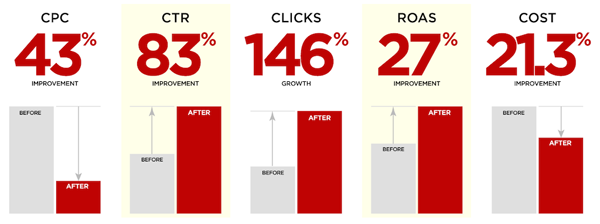Extreme Makeover: Search Marketing Edition

By Sarah Gyson, Manager, Client Services, Rakuten LinkShare
If you're like most search marketers, odds are that you may have a long-standing account that's built up a lot of history. Over time, you've likely been making adjustments along the way based on specific campaign objectives as well as changes set by the search engines. While this approach will certainly yield results, it may not be delivering the highest possible returns. To really boost campaign results, it may be time to completely overhaul your entire account structure.
While this may sound radical at first, especially if you're achieving strong results, you may be surprised at how effective a makeover can be. Here's why: if you're only making small changes to keep up with the status quo, you're likely not completely adhering to today's best practices and, therefore, missing out on opportunities.
One of the biggest fears holding up an overhaul of a search account is the concern that major changes will have a negative impact on existing, positive efforts. To avoid losing too much history, keep your top performing terms in their current campaigns and ad groups and rearrange the rest of the account around them. As a backup, you can pause current campaigns and create restructured versions. If you are not seeing improved results, you can revert to the former campaigns.
Knowing this, why not take the plunge and look at your account with a fresh eye as if you've just inherited it? To help you with this, here are six ways to make big changes that will net big results. Following the recommendations are the results that an online retailer achieved in just three weeks after revamping its search foundation.
1. Eliminate keywords that aren't working.
While advertisers continually build their keywords list, they also tend to pause those keywords that aren't performing. Instead of pausing, delete them altogether. This makes your account easier to navigate and Google will reward you with a higher Quality Score for freeing up server space.
2. Make sure all keywords go to the best possible landing pages.
When site changes happen and you make adjustments to your keywords' landing pages, it's possible that some of the lower traffic keywords get missed or point to less than optimal landing pages. It may also be beneficial to look at your low volume keywords and audit their landing pages.
To make sure your higher volume keywords direct traffic to the best possible place, regularly conduct A/B split tests as results will change over time, especially if you have had certain landing pages in place for while.
3. Revamp your ad copy.
Now that your campaigns are restructured, review the ad copy to be sure it's as specific as it can be to the new groups of keywords.
To make sure you have the best copy in place, start by testing your high volume ad groups and apply those best practices to your lower volume ad groups. Along with saving time, this top-down approach is more effective since the lower volume ad groups yield minimal traffic, therefore leaving a gap in your analysis.
Going forward, run regular ad copy tests by substituting new ads to continually yield stronger results. As you determine the best copy, you'll increase your Quality Score and decrease the amount you pay for each click.
4. Change up your routine.
While you may have a high quality score and are seeing consistent results, don't be afraid to make structural changes to make those results even better.
For example, depending on the age of your account and the last time major changes were made, the structure may no longer be as efficient to manage as it once was. For this reason, as you change up your routine, keep your campaigns tightly themed as this lends itself to easier ad creation, assigning more relevant landing pages, easier bid management, and more effective testing.
5. Outsmart the competition.
Here's three ways to strike the balance between keeping an eye on the competition without getting consumed by it.
- Look at what the competition is promoting and how it's faring in search results. Determine whether you can offer something better without compromising your brand or profits.
- Look at the wording. Is there a way to make your ads more attractive than the competitors? If you are going up against resellers, try using phrases like "official site" or "largest selection" to differentiate yourself.
- Bid to the top of the page to maintain a high CTR but monitor to make sure you are not bidding more than you have to, and consequently being charged more than you need to pay.
6. Be consistent in your messages.
Make sure your marketing messages are consistent across all of your channels. Since there are so many ways that a customer learns about your products before they make a purchase, work with the other marketing channels such as email and affiliates to ensure that the messages and offers are consistent and complementary to your overall campaign goals.
Results
As mentioned above, here are the results that a popular online retailer achieved within three weeks of overhauling its search efforts.
- Cost per click decreased 42.86 percent.
- Click through rate increased 83.52 percent.
- Return on ad spend increased 26.68 percent
- Reduced cost by 21.26 percent.
While these results are very positive, they're not outliers. Rather, they demonstrate what many online marketers can achieve by revitalizing their search strategy.










